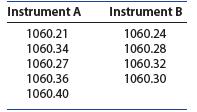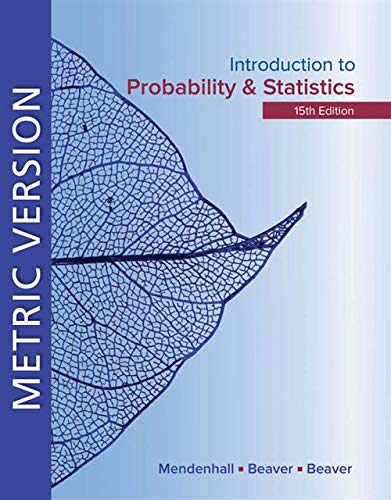5. Precision Instruments Assume (as in the case of measurements produced by two well-calibrated measuring instruments) the
Question:
5. Precision Instruments Assume (as in the case of measurements produced by two well-calibrated measuring instruments) the means of two populations are equal.
Use the Wilcoxon rank sum statistic for testing hypotheses concerning the population variances as follows:
a. Rank the combined sample.
b. Number the ranked observations “from the outside in”; that is, number the smallest observation 1, the largest 2, the next-to-smallest 3, the next-to-largest 4, and so on. This sequence of numbers induces an ordering on the symbols A (population A items)
and B (population B items). If 2 2 s A .s B, one would expect most of the A’s near the beginning of the ranking sequence, and thus a relatively small “sum of ranks” for the A observations.
c. Given the measurements in the table produced by well-calibrated precision instruments A and B, test at near the a 5.05 level to determine whether the more expensive instrument B is more precise than A. (Note that this implies a one-tailed test.) Use the Wilcoxon rank sum test statistic.

d. Test using the equality of variance F-test.
Step by Step Answer:

Introduction To Probability And Statistics
ISBN: 9780357114469
15th Edition
Authors: William Mendenhall Iii , Robert Beaver , Barbara Beaver






